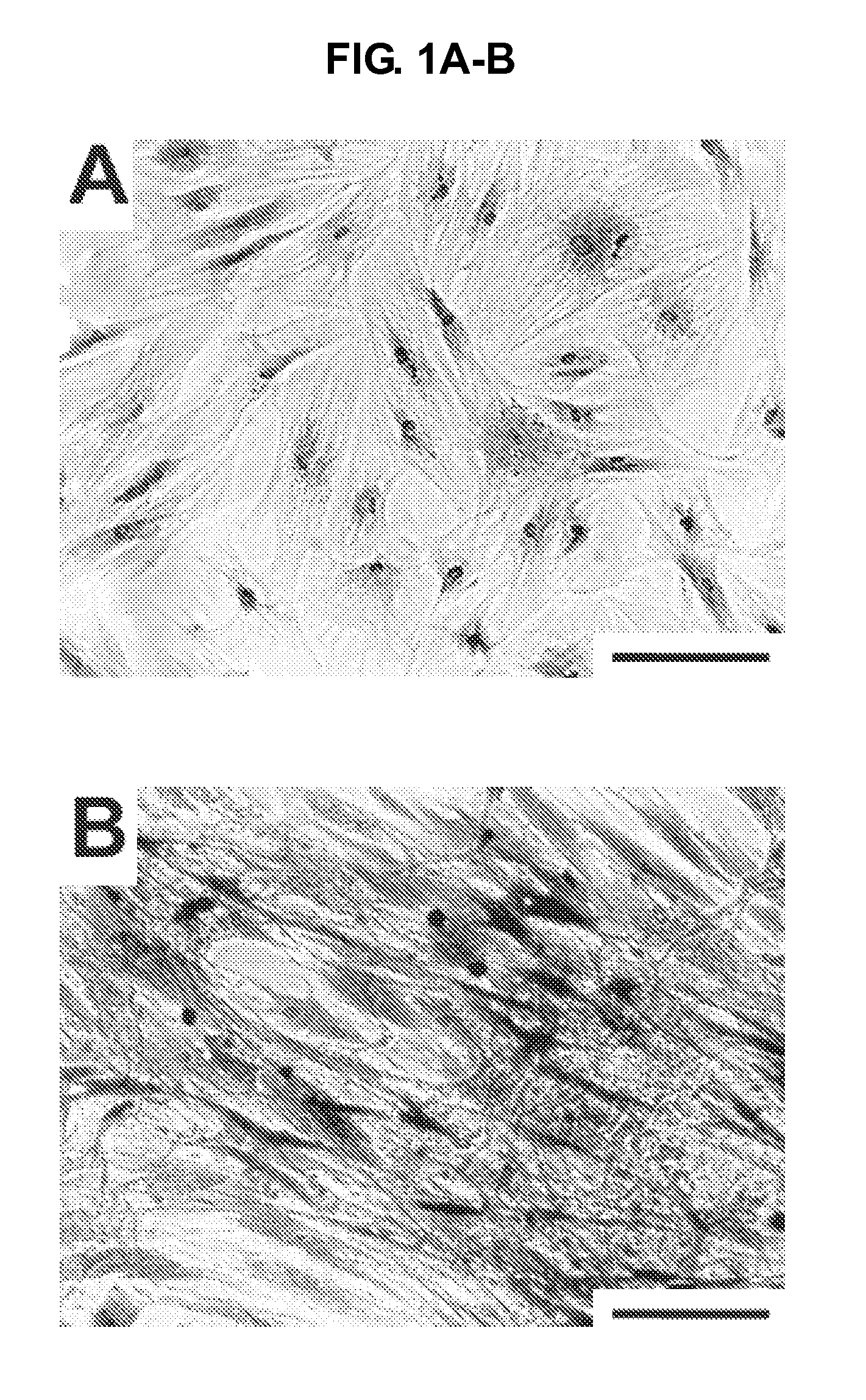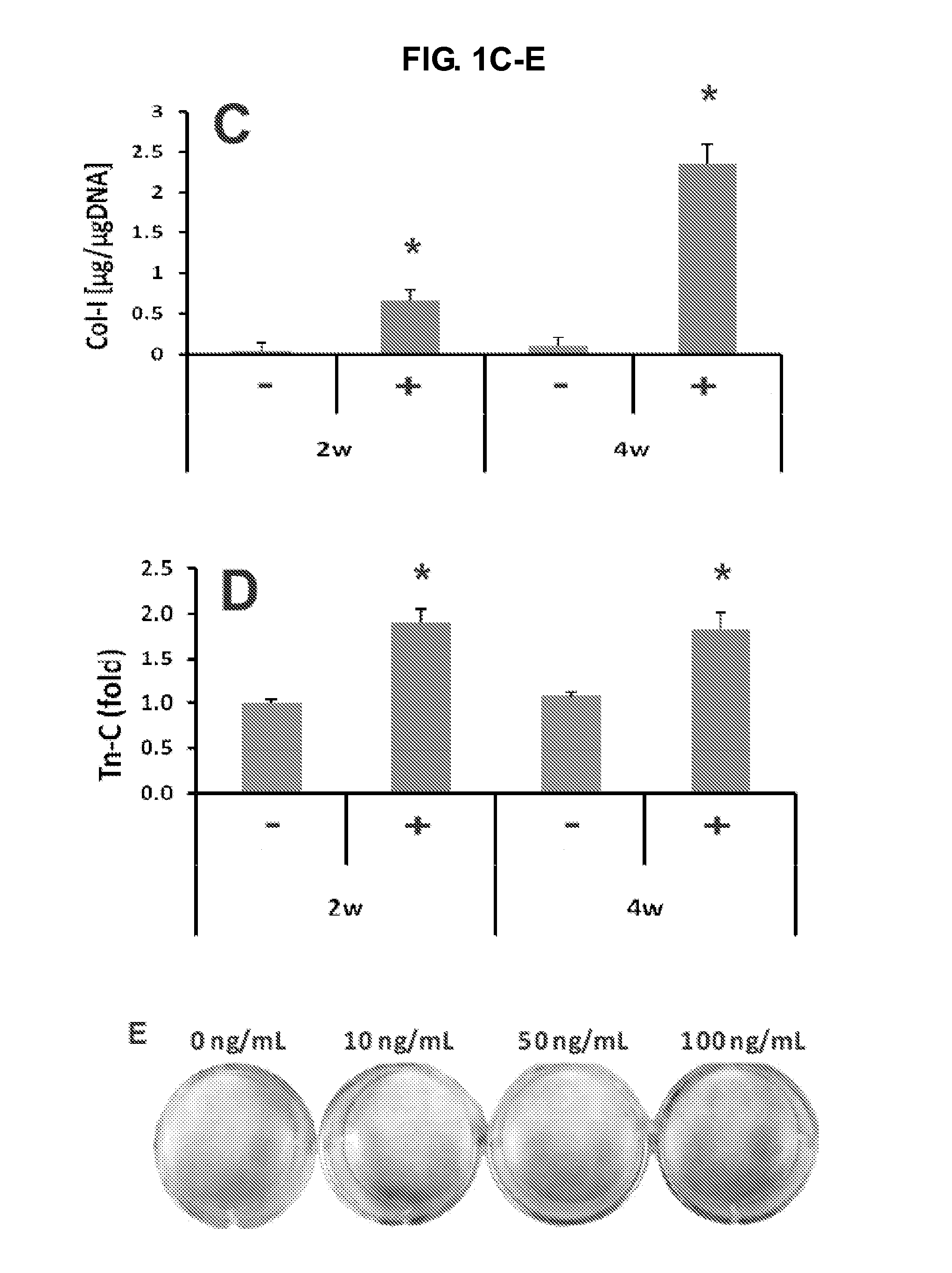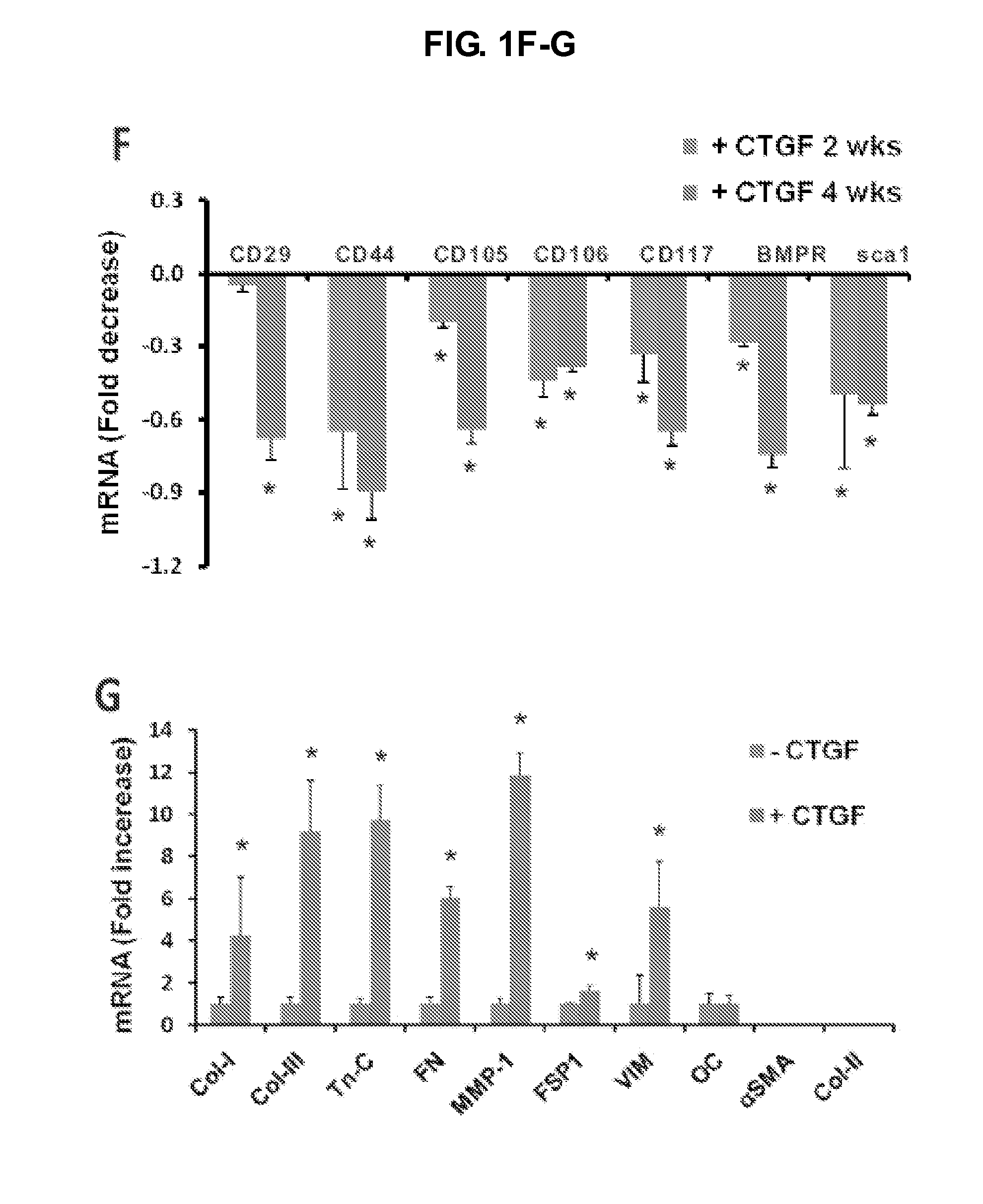Compositions and methods for wound treatment
a technology of compositions and methods, applied in the field of tissue wound treatment, can solve the problems of low reprogramming yield, insufficient study of fibroblasts, and inability to account for all fibroblasts in em
- Summary
- Abstract
- Description
- Claims
- Application Information
AI Technical Summary
Benefits of technology
Problems solved by technology
Method used
Image
Examples
example 1
Cell Isolation and Expansion
[0165]Human mesenchymal stem cells (hMSCs) were isolated from fresh whole bone marrow samples of two anonymous adult donors (age range: 20-25 yrs old) (AllCells, Berkeley, Calif.). Mononucleated and adherent cells were purified by centrifugation through a density gradient (Ficoll-Paque) per our prior methods (30) and using negative selection following manufacturer's protocols (RosetteSep, StemCell Technologies, Vancouver, Canada) to remove hematopoietic cells and other differentiated cells.
[0166]Briefly, bone marrow was transferred to a 50 mL tube, followed by addition of 750 mL of RosetteSep and incubation for 20 min. Then 15 mL PBS in 2% fetal bovine serum (FBS) and 1 mM ethylenediaminetetraacetic acid (EDTA) were added to a total volume of ˜30 mL. The sample was layered on 15 mL Ficoll-Paque and centrifuged 25 min at 3000×g. The entire layer of enriched cells was removed from Ficoll-Paque interface. The cocktail was centrifuged at 1000 rpm for 10 min. ...
example 2
Treatment with Connective Tissue Growth Factor
[0168]The following example describes selection of CCN2 / CTGF concentration for fibroblastic differentiation. Methods are according to Example 1 unless otherwise specified.
[0169]P3 or P4 hMSCs were culture-expanded in monolayer (˜5,000 cells / well) in 12-well plates. At 80-90% confluence, hMSCs were culture-supplemented with 0, 10, 50 or 100 ng / mL recombinant human connective tissue growth factor (CTGF) (BioVendor, Candler, N.C.) and 50 μg / mL ascorbic acid (Sigma), with conditioned medium change every third day. After 4 wks, collagen deposition, as revealed by Goldner's Trichrome staining increased with increasing doses of CCN2 / CTGF from 10 to 100 ng / mL (see e.g., FIG. 1E). Accordingly, 100 ng / mL CCN2 / CTGF was selected for fibroblastic differentiation for in vitro experiments.
example 3
Collagen Deposition, ELISA and RT-PCR
[0170]In this example, collagen deposition was assayed. Methods are according to Examples 1-2 unless otherwise specified.
[0171]Two to four weeks following CCN2 / CTGF treatment, collagen type I and tenascin-C (Tn-C) were assayed by ELISA using commercial kits (Chondrex, Redmond, Wash. and IBL-America, Minneapolis, Minn.). Collagen type I matrix was lysed using 0.5 M acetic acid. Collagen deposition was visualized using Trichrome staining. Total RNA was isolated using Trizol from CCN2 / CTGF-treated hMSCs. Following lysing with Trizol, samples were incubated for 5 min at RT. A total of 0.2 mL chloroform per mL Trizol was added, and followed by mixing and incubation for 3 min. After centrifugation at 12,000×g and 4° C. for 15 min, the upper phase was transferred into a new tube with 500 μL isopropanol added. After 10 min incubation and another centrifugation for 10 min at 12,000×g, the supernatant was discarded. The pellet was washed with 1 mL 75% etha...
PUM
| Property | Measurement | Unit |
|---|---|---|
| Fraction | aaaaa | aaaaa |
| Fraction | aaaaa | aaaaa |
| Mass | aaaaa | aaaaa |
Abstract
Description
Claims
Application Information
 Login to View More
Login to View More - R&D
- Intellectual Property
- Life Sciences
- Materials
- Tech Scout
- Unparalleled Data Quality
- Higher Quality Content
- 60% Fewer Hallucinations
Browse by: Latest US Patents, China's latest patents, Technical Efficacy Thesaurus, Application Domain, Technology Topic, Popular Technical Reports.
© 2025 PatSnap. All rights reserved.Legal|Privacy policy|Modern Slavery Act Transparency Statement|Sitemap|About US| Contact US: help@patsnap.com



